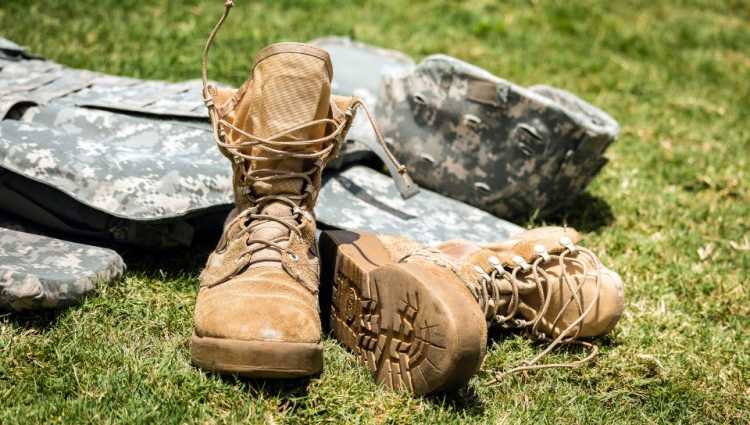Breaking Down the Final PCS Move
by Rebecca Alwine - July 20th, 2022

No two military moves are the same, but they bring some predictability. You know when to file for your dislocation allowance, how to schedule the movers, and, usually, have an estimate of how long the shipment will take. But when facing that last permanent change of station move, some differences exist.
The final PCS move
Your final PCS, just like your other CONUS moves, can be contracted out to government movers or you can opt to do a PPM, formerly known as a DITY. You'll need to consider a few things when making this decision.
Rule: The military will pay for one last move, equivalent to moving you from your current location to your home of record or place of entry. If stationed on the West Coast and your home of record is on the East Coast, you'll have a significant amount of miles/dollars to deal with.
Exception: The DoD pays out based on a formula that combines your rank-based weight allowance and the miles authorized in the final move. So, if you're moving a little amount across a long distance, you may still be able to have it covered by the DoD. Of course, this means the opposite is also true.
If you are considering a PPM – and chances are you've done this before – you may notice a few changes to your active-duty PPM. The reimbursement is the main difference. In your past PPMs, you received 95% of what the government would pay the contractor. But for the final move, the reimbursement rate is based on the previously determined weight to distance formula above.
Depending on your service branch – and your type of separation, you may be eligible for an advance on your PPM. For example, the Army offers a 60% advance for those retiring. The Air Force and Marine Corps offer an advance for all those separating, and the Navy offers no advance.
What type of final move should you choose?
So, the ultimate decision is the same one you've faced over and over throughout the years. What kind of move should you opt for? Of course, you can compare costs and verify this with your local transportation office. You'll also consider your timeline, whether you want to mess with storage, etc.
If you opt for the DoD-covered move and you're over your weight allowance, you'll have to pay extra. Weight overages are in the pre-move counseling, and you'll have to sign a form saying you acknowledge this is a possibility. Your household goods will be delivered regardless of what you owe, and you can either pay right away or let the government track you down and deduct it from your tax returns later – you know they'll find a way.
Separating vs. Retiring
Are there differences in your entitlements based on the type of separation from the military? Yup! Here is the main one, which pertains to how long you must complete your final move, for which we consulted the Defense Finance and Accounting Service's website to get the most accurate information.
When separating from the military, you have six months from the date on your separation orders to complete your final move, and you're only entitled to move to your home of record or the place you entered duty.
For retirement move reimbursements, you have one year from the date on your retirement orders, and your reimbursement is not restricted to your home of record or the place where you entered active duty.
You may have heard rumors that you can extend that final retirement move past one year. There is some validity to that, but it also comes with the classic military disclaimer of "it depends." You can request an extension of the year up to five times to your local transportation office by providing them with a reason for the extension. They don't have to accept it, but they may. (We've heard the reason doesn't really matter, but again, "it depends.”) No matter what, your absolute deadline is six years from your retirement date.
What are you entitled to for your final PCS?
There are a few differences in financial entitlements when completing your final move. For example, you'll still be eligible to claim expenses for dependent travel. However, dislocation allowance and temporary lodging expenses are not available for the final move.
Another difference is when you are opting for a storage length. You must choose one of the two options at the beginning, and you cannot change your mind. The options are long-term storage at your last location and short-term storage at your destination.
Short-term storage – up to 90 days
Long-term storage – up to 180 days for separating and up to one year for retiring
How long until you get reimbursed?
The ultimate PCS question always comes down to how long you should expect to wait before receiving your money. The websites all say something like two weeks, but we know it can take up to a few months – especially during the height of PCS season. If you submit using SmartVoucher, you can check the status online.
When should you start prepping for the final PCS?
All in all, prepping for your final move should look a lot like a regular PCS move. You'll likely have separation or retirement orders six to nine months out, but you may have already figured out some details. You probably know where you are moving – or if you plan to put your things in storage.
If you're a PCS binder kind of person, dust that off and put it to work again. If you're a digital person, make a google doc or spreadsheet you can share with all the members of your household. Either way, it's still a good idea to purge the things you don't need and to organize before the packers come. There are various techniques to go about this, but by the time you've reached the end, you've probably figured out what works best for you.
The final PCS may stir up many emotions – we're guessing the most popular one is "finally!" – but knowing the details and having a plan will make it easier to push through the feelings and get things done. Happy final PCS move!









